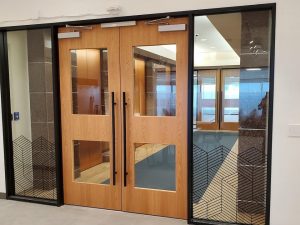Industrial environments demand more from control systems than just efficiency. The constant vibration, temperature swings, and exposure to dust or moisture can push lesser systems to their limits. A Rockwell Allen Bradley PLC is built with durability in mind, designed to maintain performance in conditions that would cripple ordinary hardware, while supporting everything from standard automation tasks to advanced custom PLC applications.
Durable I/O Modules Engineered For Demanding Production Lines
Rockwell Allen Bradley PLC I/O modules are crafted for high-volume production environments where machinery rarely rests. These modules are housed in robust casings that shield them from impacts, debris, and electrical surges, ensuring consistent communication between field devices and the processor. The design considers both mechanical stability and electrical integrity, which helps prevent the random faults that can halt operations.
A PLC programming company implementing a custom PLC solution often chooses these I/O modules for their adaptability and long-term reliability. In practice, they withstand continuous operation on production lines that run 24/7, delivering accurate input and output readings without degradation. This resilience allows plant managers to maintain output levels without sacrificing product quality or scheduling frequent component replacements.
Consistent Signal Processing In Extreme Environmental Conditions
On plant floors where humidity, heat, or freezing conditions are part of the daily reality, signal stability is non-negotiable. Rockwell Allen Bradley PLC systems are engineered with temperature-tolerant circuitry and moisture-resistant components that keep data processing accurate under fluctuating conditions. This means that signal noise, drift, or loss is kept to a minimum, even when the environment is less than ideal.
The value here extends beyond hardware. For teams that understand what is PLC programming, the consistency in signal handling simplifies the coding process and minimizes the need for environmental compensation in the logic. This allows the PLC programming to focus on optimizing operations rather than troubleshooting unstable signals, resulting in faster response times and dependable control.
Modular Design Enabling Swift Hardware Replacements
The modular nature of Rockwell Allen Bradley PLC hardware allows engineers to swap out faulty components in minutes, without dismantling the entire system. This is particularly advantageous during critical production runs where downtime translates directly into lost revenue. Each module is designed for tool-less installation, reducing both the skill and time required for replacements.
For facilities relying on custom PLC setups, this modularity means they can scale or reconfigure systems without major overhauls. A PLC programming company can integrate new modules into existing code structures with minimal disruption, ensuring that expansions or modifications align seamlessly with plant demands. This blend of mechanical simplicity and programming flexibility makes modular design a key driver of uptime.
Built-In Diagnostics Reducing Unplanned Equipment Downtime
Rockwell Allen Bradley PLCs come with built-in diagnostic features that constantly monitor system health. These tools provide early alerts for issues like overheating modules, degraded communication links, or irregular power supply levels. By identifying problems before they escalate, maintenance teams can schedule repairs during planned downtime instead of reacting to sudden breakdowns.
For plant engineers, integrating these diagnostics into PLC programming means automated fault-logging and even self-correcting routines. A custom PLC program can be designed to trigger backups, redirect processes, or send alerts to operators instantly. This proactive approach keeps production moving smoothly while cutting costs tied to unexpected stoppages.
Stable Communication Protocols For Uninterrupted System Control
Reliable communication between PLCs, HMIs, and other control devices is vital for coordinated operations. Rockwell Allen Bradley PLC systems employ robust protocols like EtherNet/IP, ensuring real-time data transfer without bottlenecks or dropped packets. This is essential in multi-station plants where timing is critical and delays can affect entire production lines.
A PLC programming company often takes advantage of these stable protocols to build control networks that operate like a single, synchronized unit. Whether it’s a basic control loop or a complex, plant-wide automation strategy, stable communication ensures commands are executed without delay. This stability also supports future upgrades, keeping the network strong as more devices are added.
Secure Data Handling That Withstands Electrical Interference
Electrical interference from motors, welders, and other heavy machinery can corrupt data signals. Rockwell Allen Bradley PLCs incorporate shielding and noise-filtering technologies that protect against these disruptions. This ensures that both control commands and sensor feedback remain accurate, even in electrically noisy environments.
For anyone asking what is PLC programming in such conditions, the answer includes coding for error-free data exchange under interference. This capability allows engineers to design control logic without layering excessive error-handling routines. The result is a cleaner, more efficient program that still operates reliably on a busy factory floor.
Continuous Operation Supported By Redundant Power Configurations
In industries where halting production isn’t an option, redundant power supplies keep Rockwell Allen Bradley PLC systems running without interruption. If one power source fails, the backup instantly takes over, maintaining control system operation until the main supply is restored. This design safeguards against both short-term outages and extended power disruptions.
A custom PLC programmed for such redundancy can continue executing logic without losing state or data, ensuring that processes resume seamlessly after a fault. This feature is especially valued in critical manufacturing sectors, where continuous operation is directly tied to output targets and contractual obligations. By combining hardware redundancy with smart PLC programming, plants secure the reliability they need on the production floor.






Leave a Reply